You may not find this terribly rewarding unless you're included here, so this is a good time for casual and random browsers to turn back before they get too caught up in the sweep and majesty of the proceedings and can't let go.
We're not based in Europe anymore, and we've struggled through the covid-19 lockdowns like everyone else, so we haven't set foot in Italy since February 2019. Now we're making up for lost time with mad sightseeing, but missing the cats even more sorely as the days fly by.
A brief look round some of the neighborhoods we might have missed over the past week (22 November 2022)
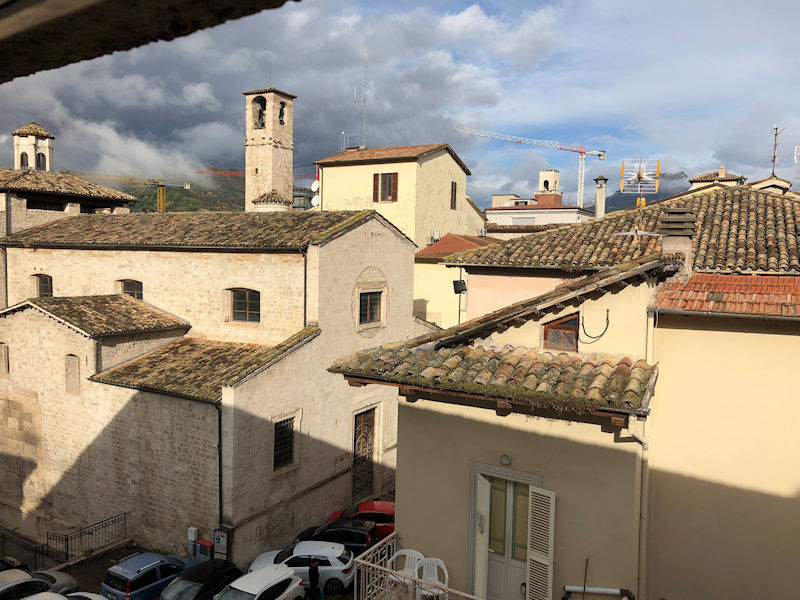
The new view, a room on the top floor now of the Hotel Guiderocchi, and the Chiesa di San Venanzio below
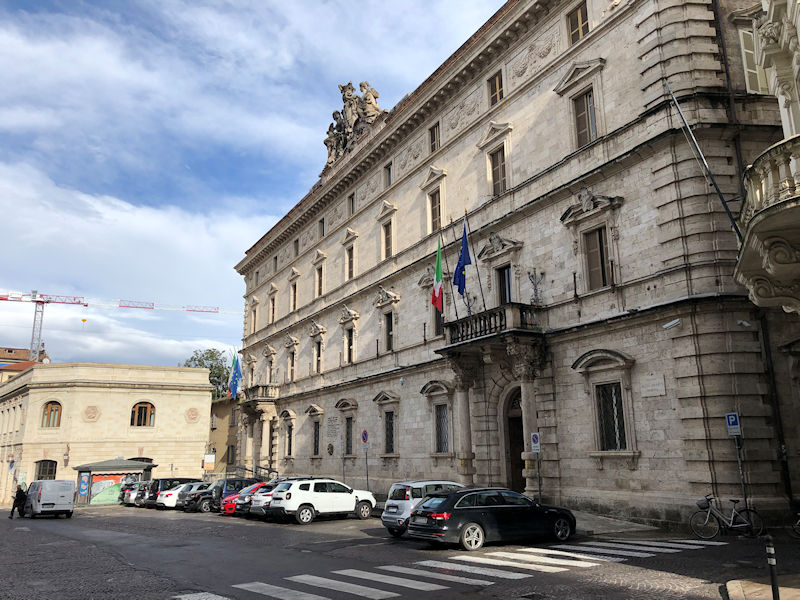
We haven't been through here yet; it's the Piazza Fausto Sominetti, actually part of the Corso Trento e Trieste, and that's the Prefettura, the Palazzo del Governo. It's just a block east of the Piazza del Popolo, right behind Johnny Spiedino Fast Food.
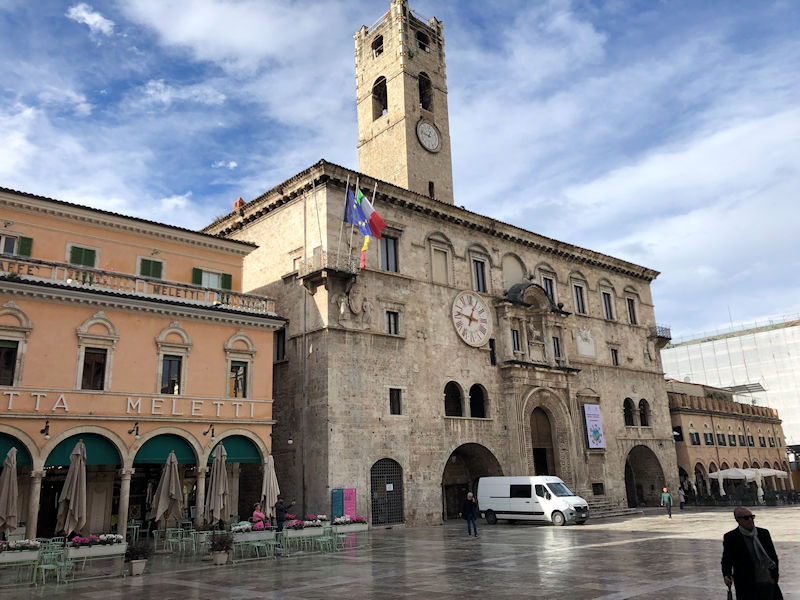
It's a quiet day in Ascoli Piceno -- few tourists, not much going on, so . . .

. . . we'll tiptoe into the Palazzo dei Capitani and check out the interiors.
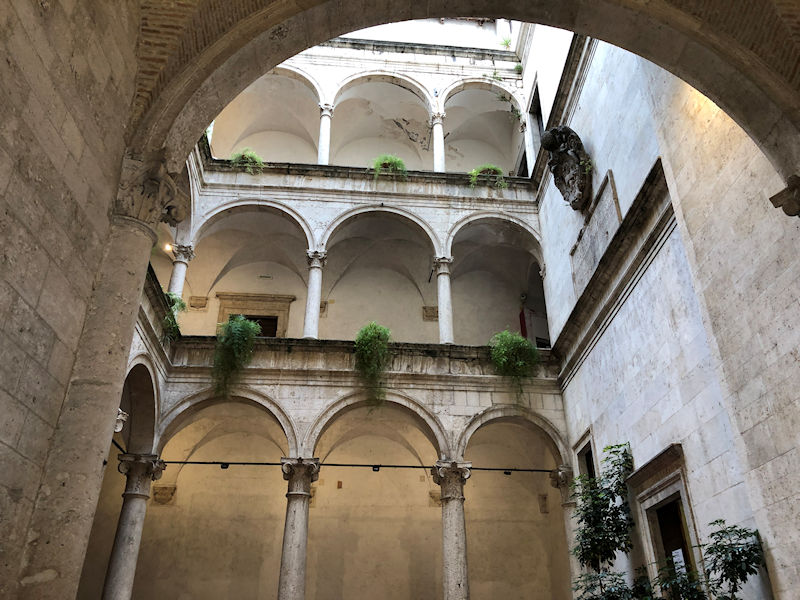
Impressive
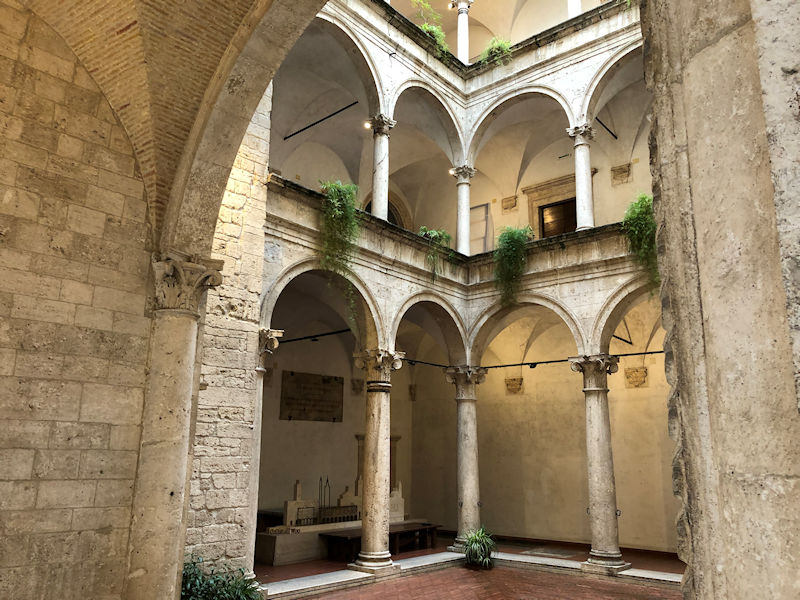
How fine it would be to be working in a place like this. Assuming it's got wifi.

The belltower out the top of the central courtyard

Actually we were looking for something here, though whatever it was is long forgotten, but . . .

. . . it's time to give up and just admire the overall effect.
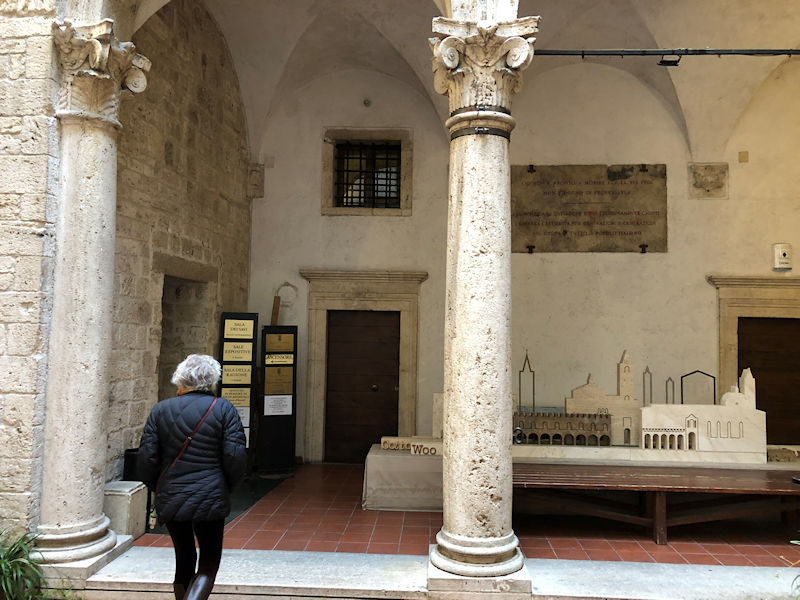
Where to next?
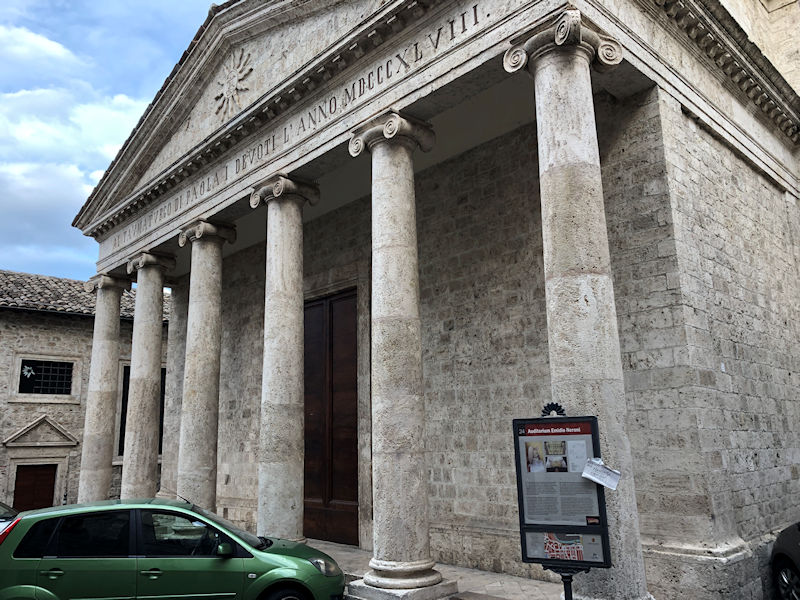
We passed this thing by a few days ago, but it actually has an interesting history. It was originally a pair of churches, the Knights Templar's St Giovanni ad Templum from the 12th-13th century and the 19th century St Francesco di Paola, which were purchased by the Cassa di Risparmio [savings bank] of Ascoli Piceno in 1989 and 1991 and converted into a conference hall called the Auditorium Emidio Neroni.

We're passing through the Piazza Ventido Basso, which we saw the other day, and that's the back of the Chiesa dei Santi Vincenzo e Anastasio; at the moment, we're looking for the way back to the Roman bridge.
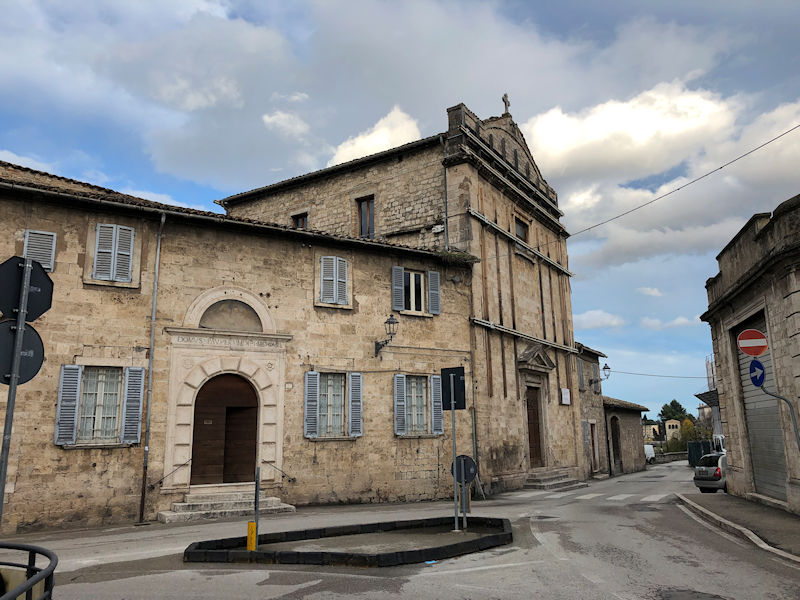
That's the Monastery of the Benedictine Sisters of S Onofrio and the related Chiesa di Sant'Onofrio, both perched over the river behind them.
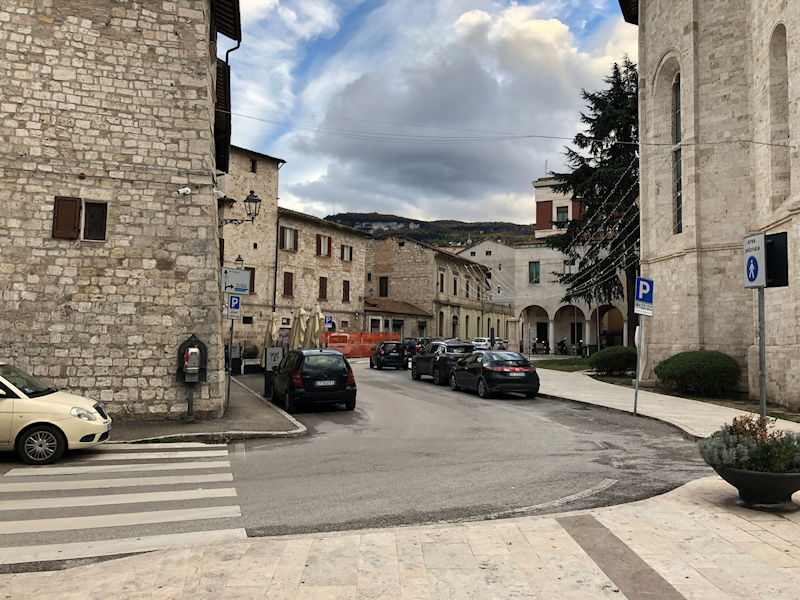
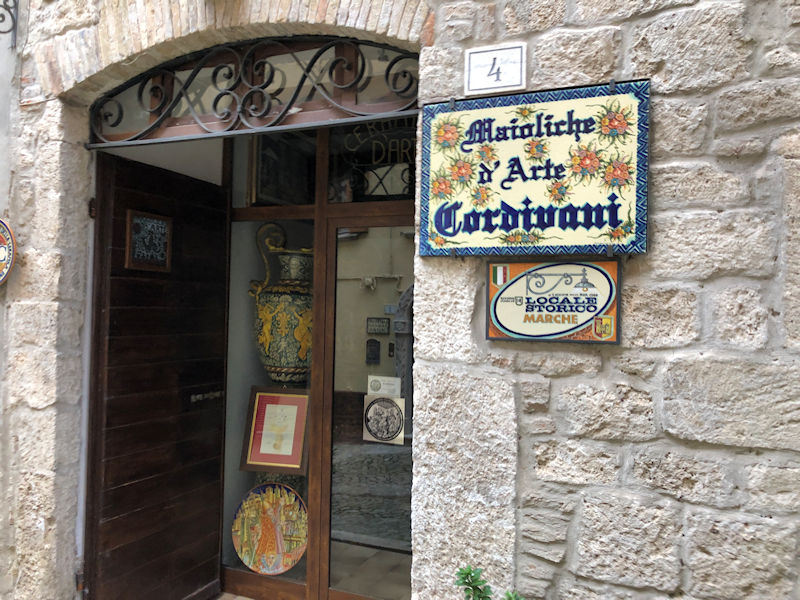
The workshop of the Maioliche d'Arte Cordivani Luciano in the tiny Rua dei Cappelli -- majolica ceramics seem to be a favored art form in this district.
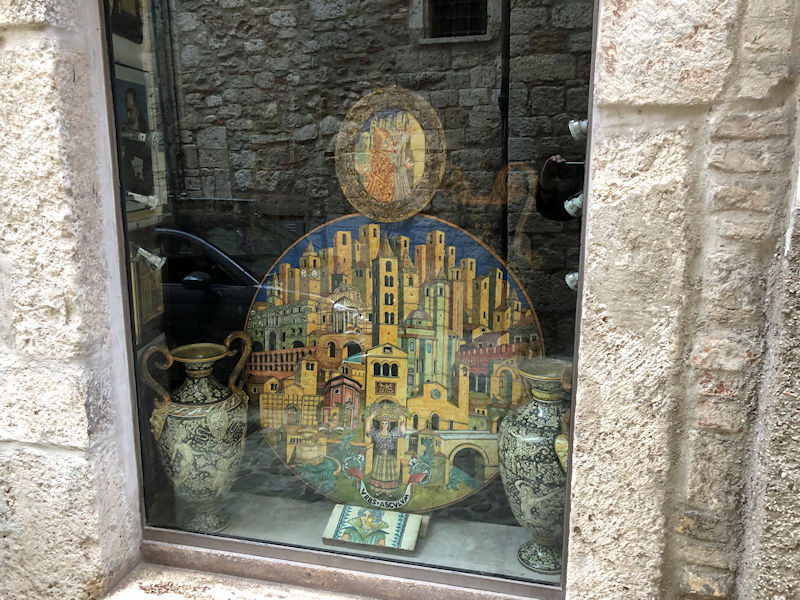
The motto at the bottom of that big one says 'Urbs Ausculum', the Roman name for the city.
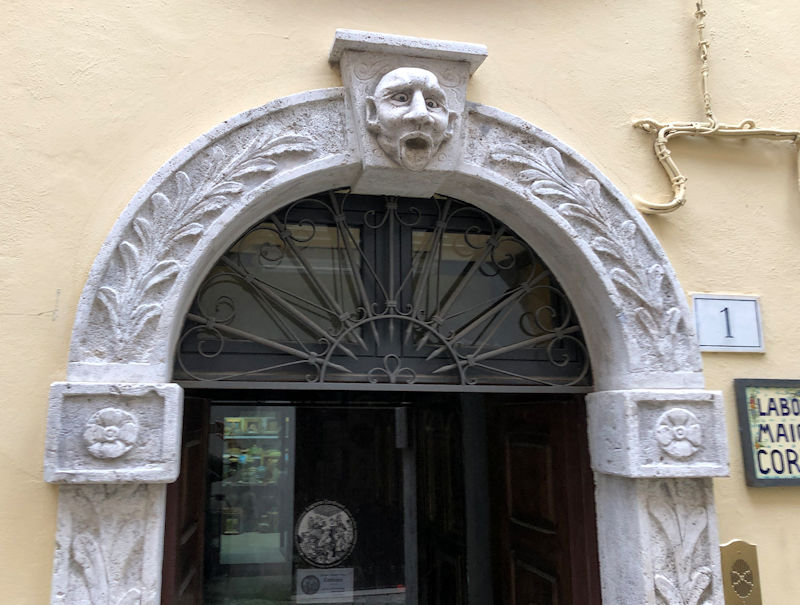
A 'mascaron' face over the door to discourage evil spirits
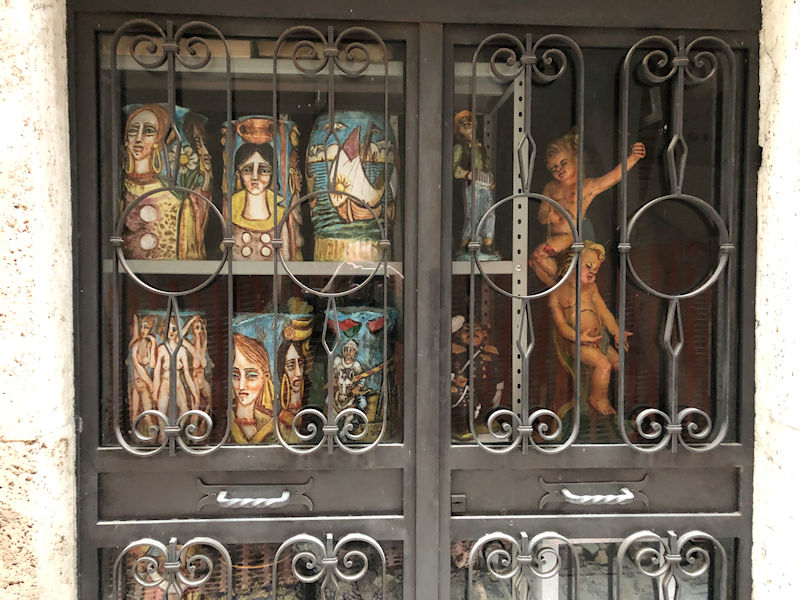
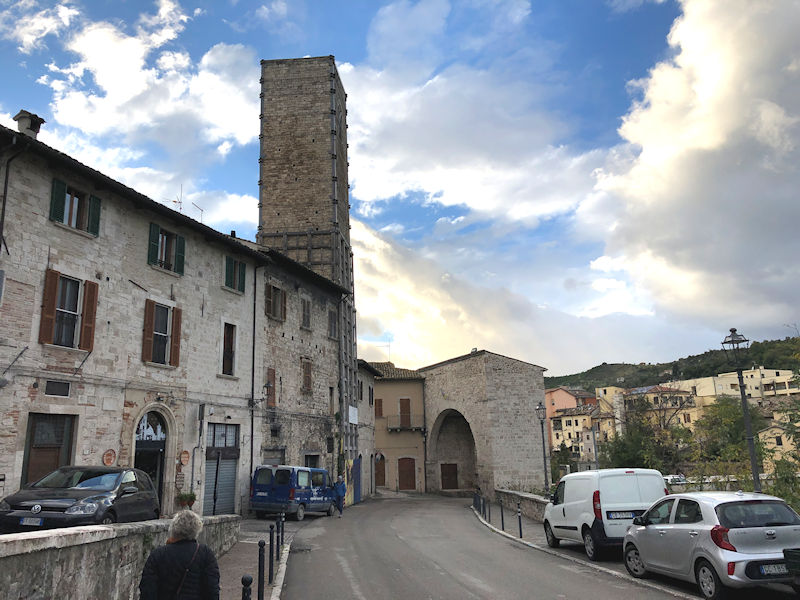
We've found the Roman Bridge at last, the Ponte di Solestà, over the River Tronto.


The suburbs on the other side of the bridge

Along the Via S. Serafino da Montegranaro on the other side of the bridge, from which . . .
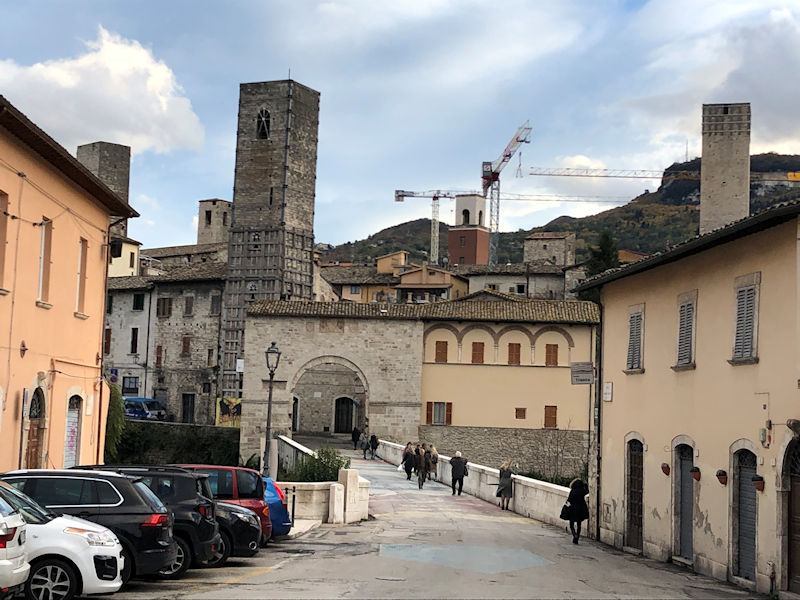
. . . we have an advantageous view of the bridge, its gateway, and various towers.
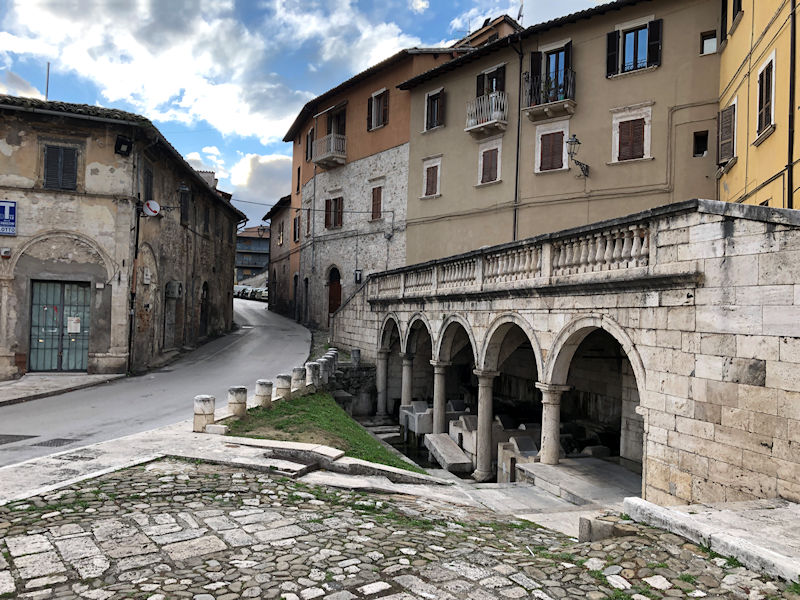
That's the Lavatoio di Porta Cappuccina -- this was a clothes washing facility for the local women from at least 1625, with an older architecture dating back to the 12th century. It's fed by a spring that miraculously flowed from the rock where Sant'Emidio's head rolled after he'd been decapitated. Or alternatively, when Emidio realized that he was converting so many new Christians that he didn't have access to enough water to baptize them all in a timely manner, he struck the stone with his stick and got plenty.
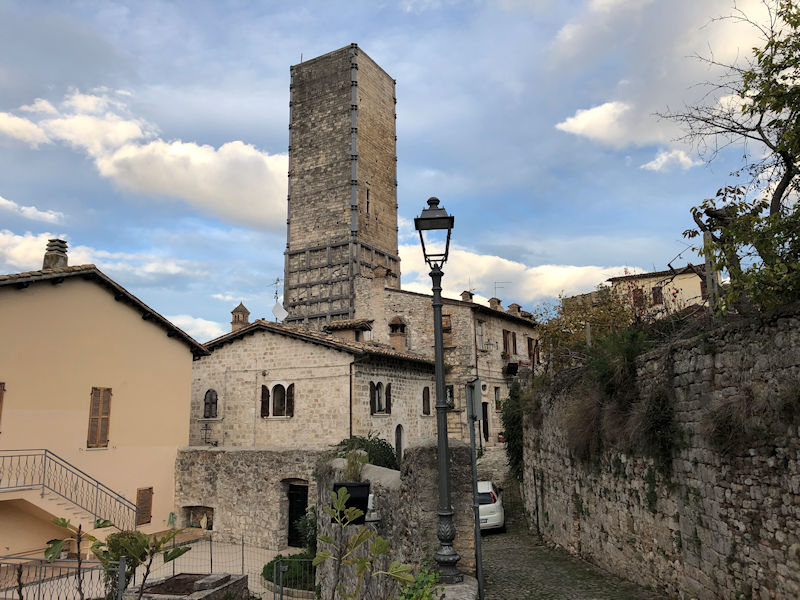
One member of our party is striking off now along the Via delle Stelle, otherwise known as the Rrete li Mierghie (the lane or 'rua' of the merlons, which adorned the city walls when they were still here).
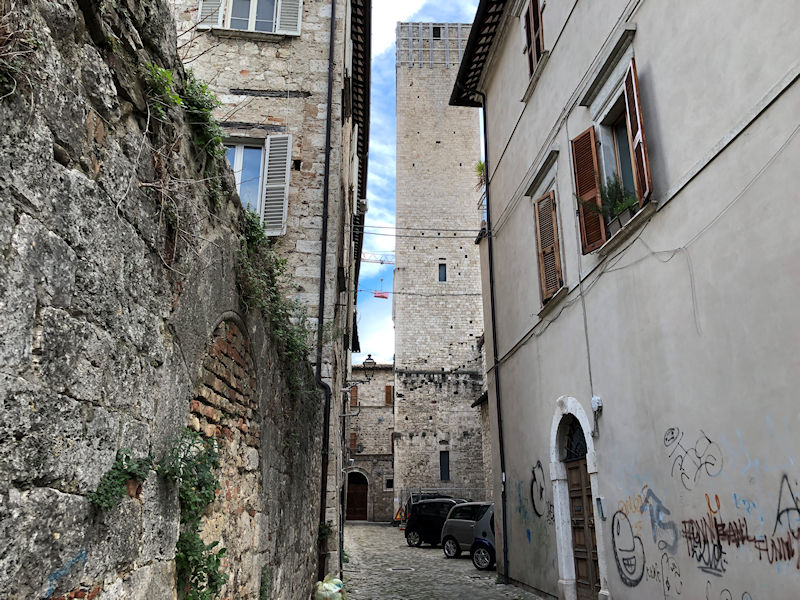
This oldest neighborhood near the bridge is like a festival of surviving family towers -- here's one.
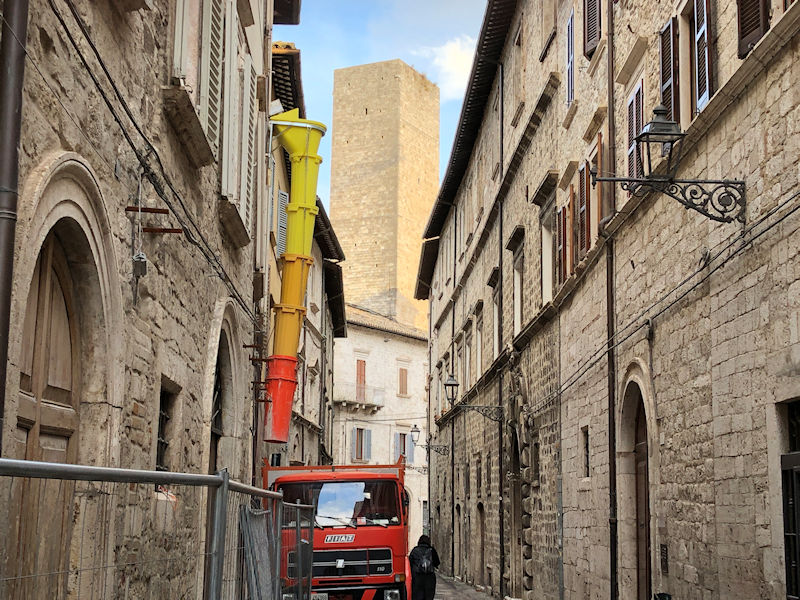
And another
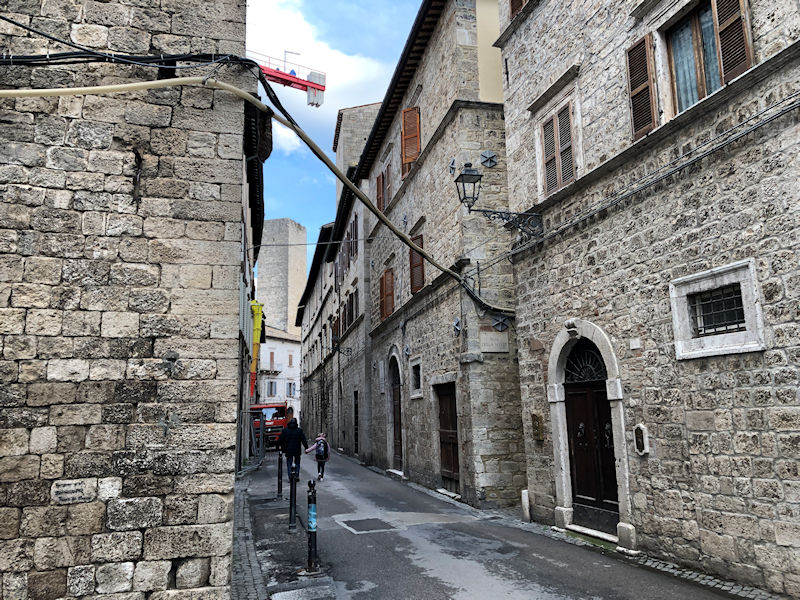
And another. Oh. That's the same one.

And that's the first one again. We're going in circles!
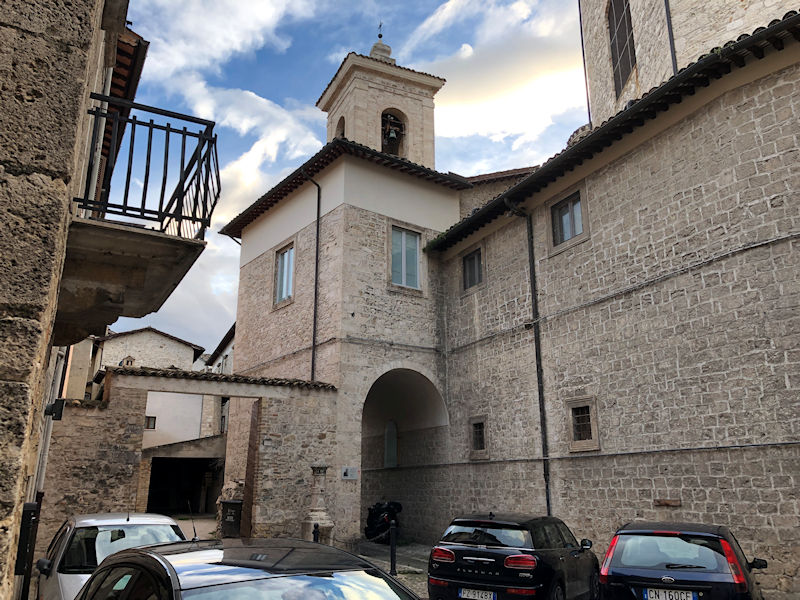
This is Largo delle Concezioniste, and this . . .

. . . is the communal water source for the neighborhood into very modern times.
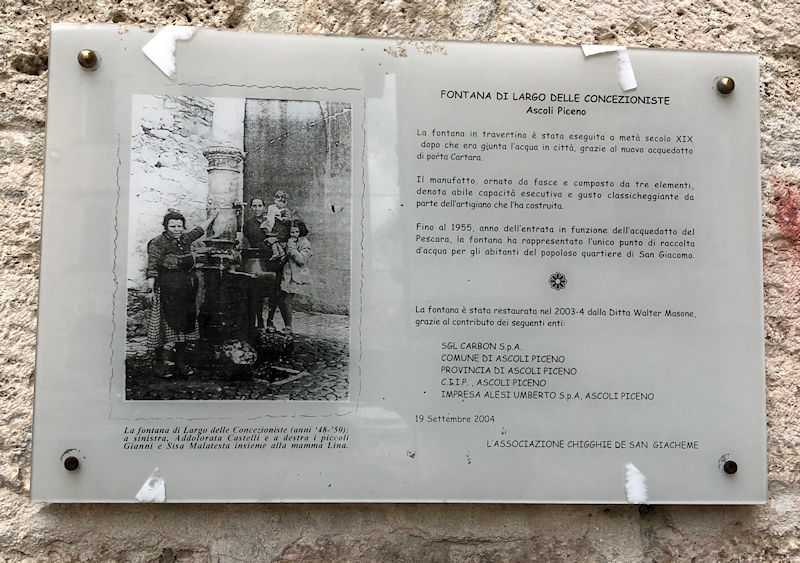
-- Wow. Running water, right down the street. Grab my bucket.
(It's hard to imagine, to be honest. So much for a hot shower every morning.)
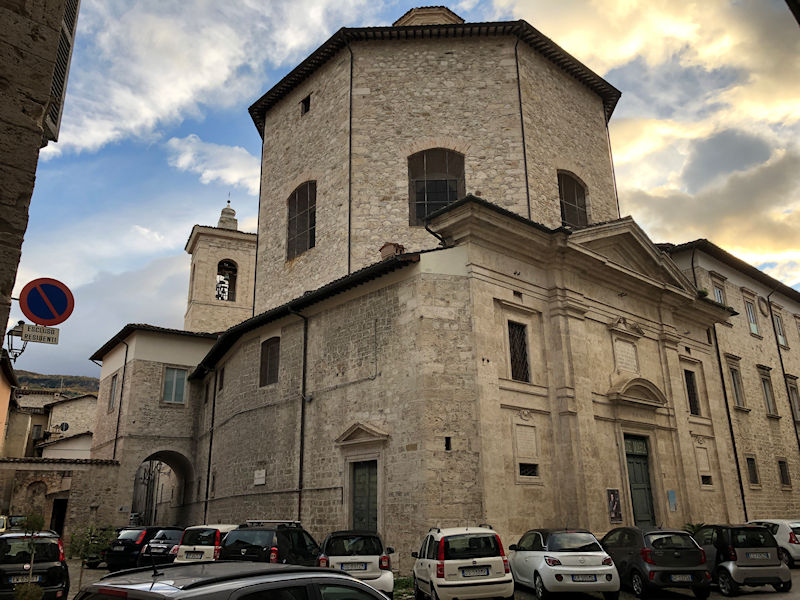
That's the neighborhood church, the Chiesa dell'Immacolata Concezione, of 'the Immaculate Conception'.
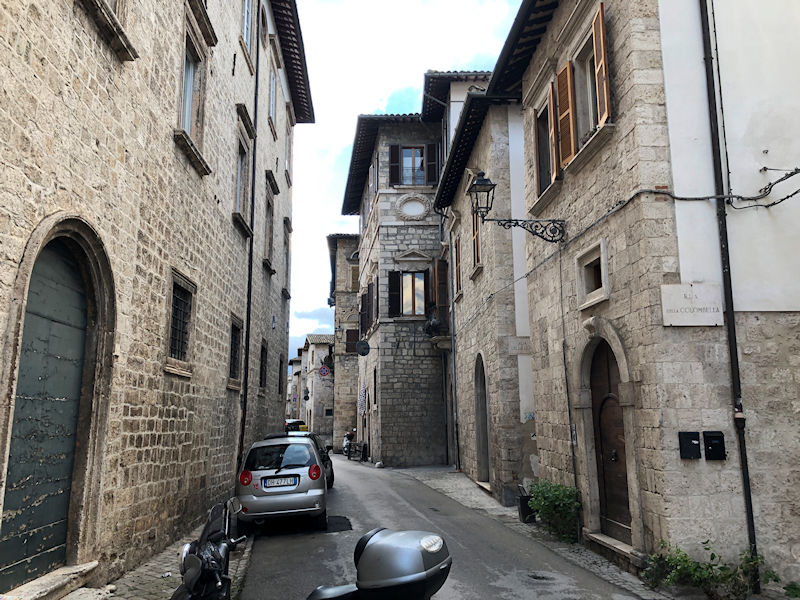

Here along the Via Annibal Caro, is the Chiesa di San Giacomo, a 13th or 14th century Romanesque church rebuilt over an original early Medieval church, updated over time but restored to its Romanesque/Gothic style in 1937.

And here, at the western end of the old town, is the
Auditorium San Leonardo, presently . . .
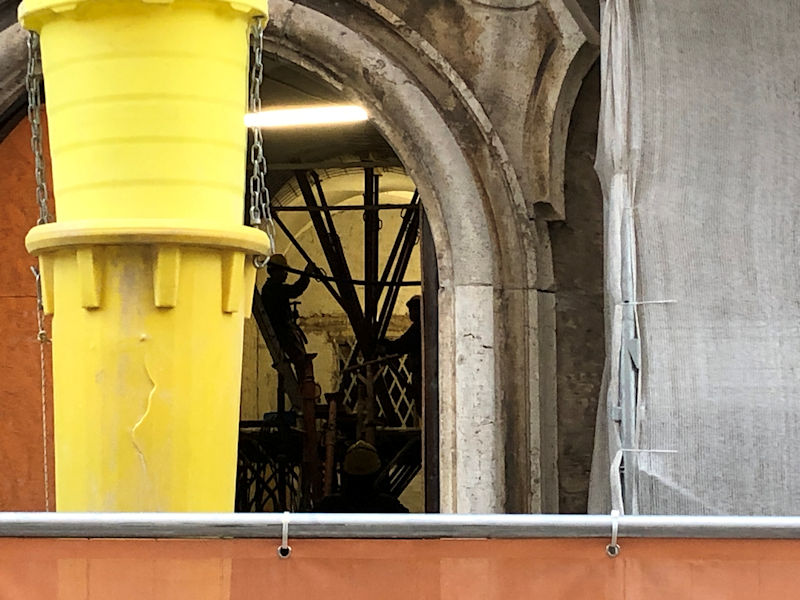
. . . undergoing a thorough maintenance programme.
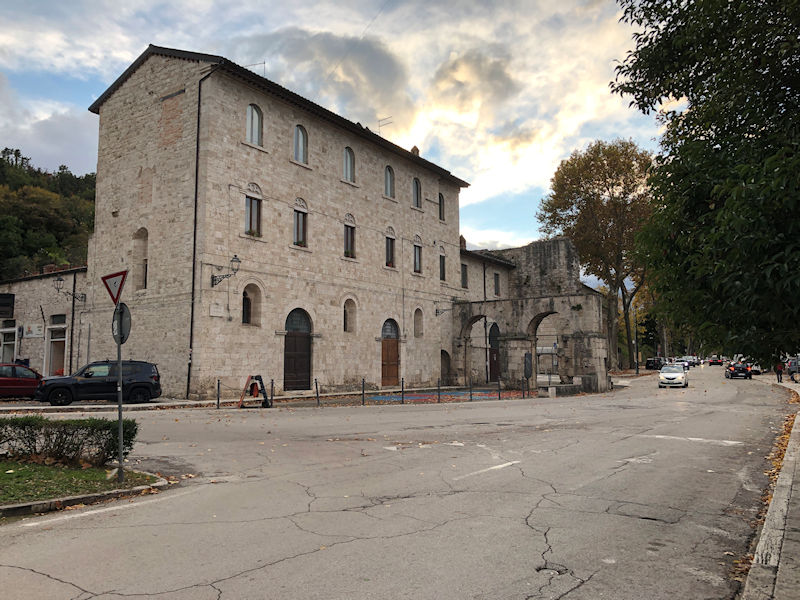
We're standing in the Piazza Cecco d'Ascoli now, and that's the remains of the double western city gates -- double in two senses.
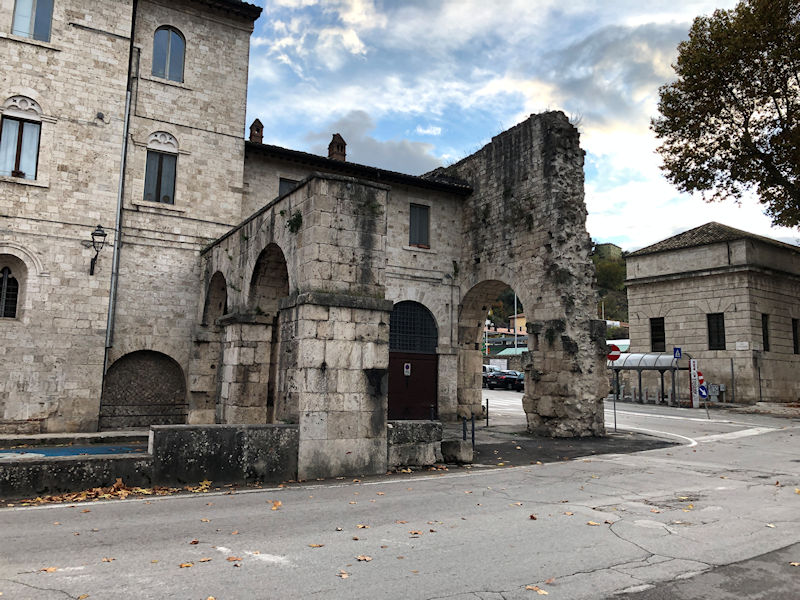
On the left is the Porta Gemina ('Twin Gate'), a Roman gate from the 1st century BC, through which the Via Salaria entered the city, and on the right, the Porta Romana.
The first gate here, protecting the entrance to the city on the flat between the Annunziata hill and the steep banks of the Tronto, was destroyed by the Roman army during the Social War in 89 BC, and some remains were only discovered in the 20th century.
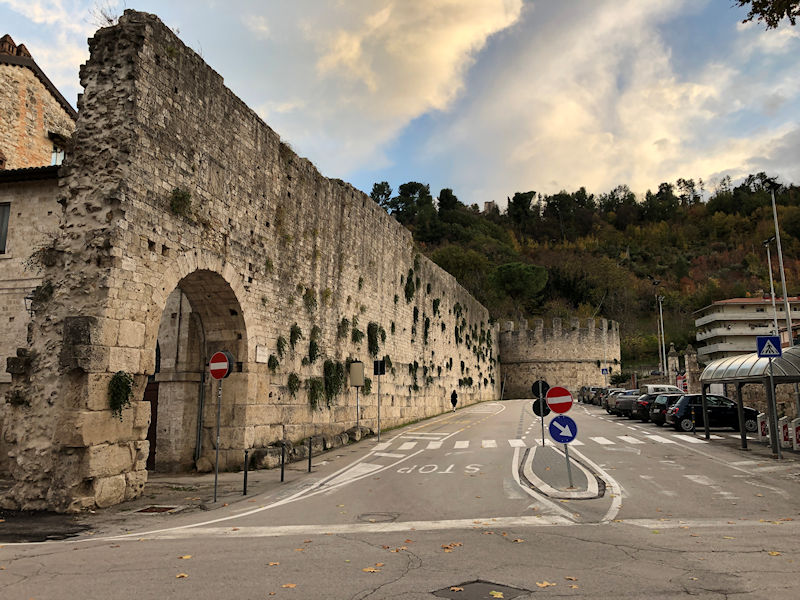
Following the Emperor Frederick II's devastations here in the 13th century, the two arches of the Porta Gemina were added to the successor single Porta Romana, and subsequently the double system was incorporated into the city walls, though only the single gate was used for traffic.

Just outside the gates, we're in what's called the Largo Porta Romana. The city walls are made of travertine ashlar blocks scavenged from Roman ruins lying about, with small blocks of stone above that.

Here's the remains of the old western gateway from just outside the medieval city wall. This was the only part of ancient Ascoli that was not protected by the steep ravines of the two rivers.
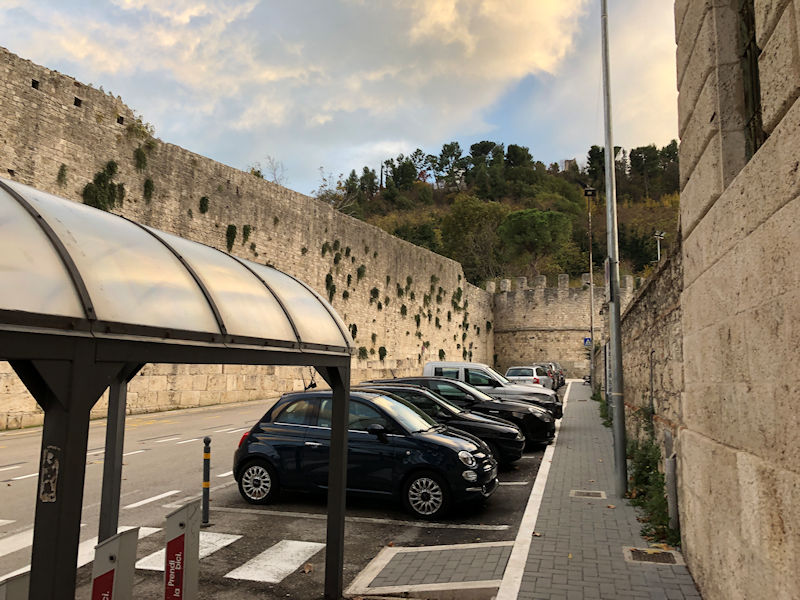
The circular crenellated tower covering the gateway was a product of the 13th century. It was meant to connect the later city fortification over the road, demolished in the early 20th century, to the 16th century Fortezza Pia at the top of the Colle dell'Annunziata.
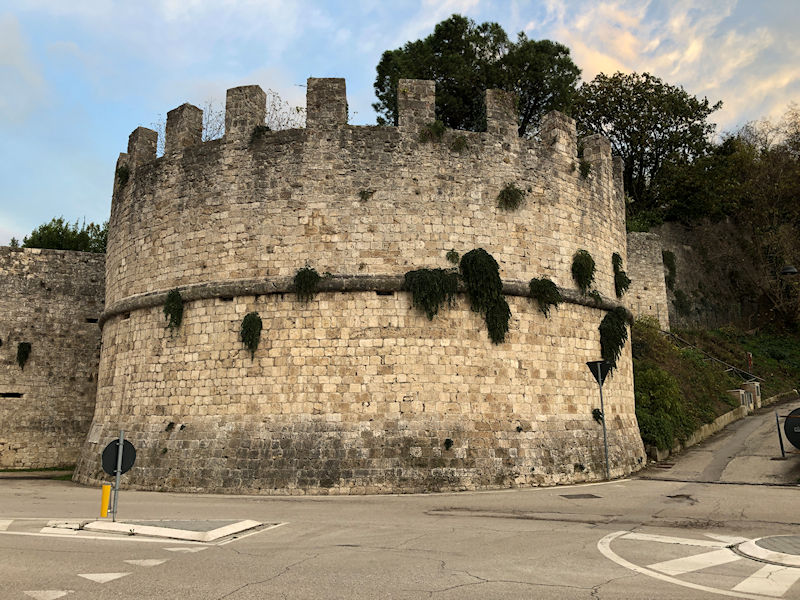
One cannot help but notice a rudimentary stair leading up the right side of the tower; one must investigate.

A jiggly imperfect view of the little path up to the battlement (the mud was a bit slippery at precisely the wrong moment), with . . .
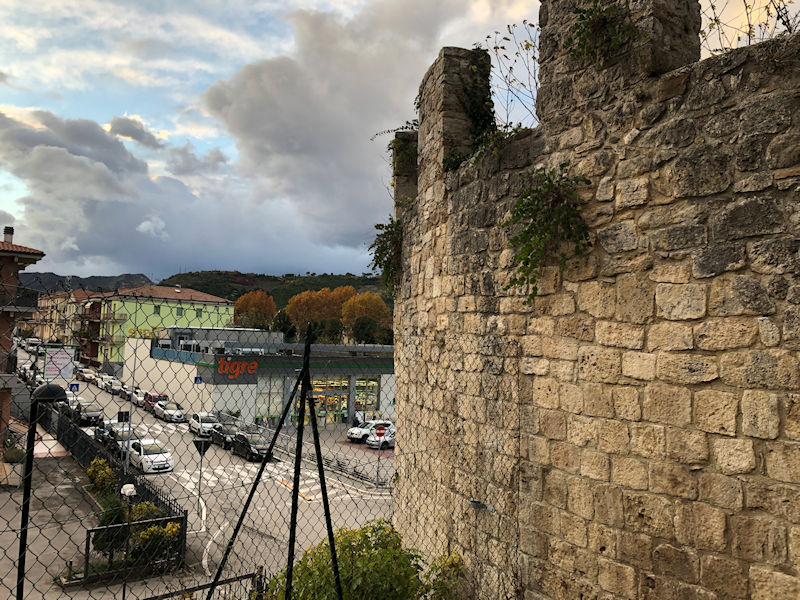
. . . a good view of the more modern 'Tiger' supermarket, and . . .

. . . a ramshackle path leading up along the wall towards the fortress.
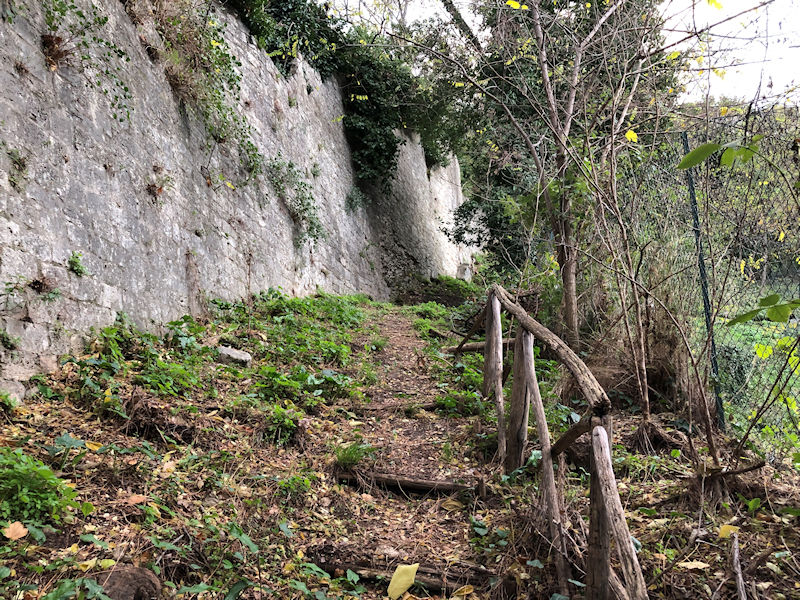
Could we scramble all the way up to the fort? Should we? Before dark?

We're glad we aren't wearing our fancy dress shoes.
Luckily, we don't have any fancy dress shoes; or any dress shoes at all.

We must be getting close to something. The town map shows a narrow road passing through the wall high up and then doubling back to access the Fortezza Pia; we dream of making it to that road and trotting back into town without having to mud-ski down this path at dusk.
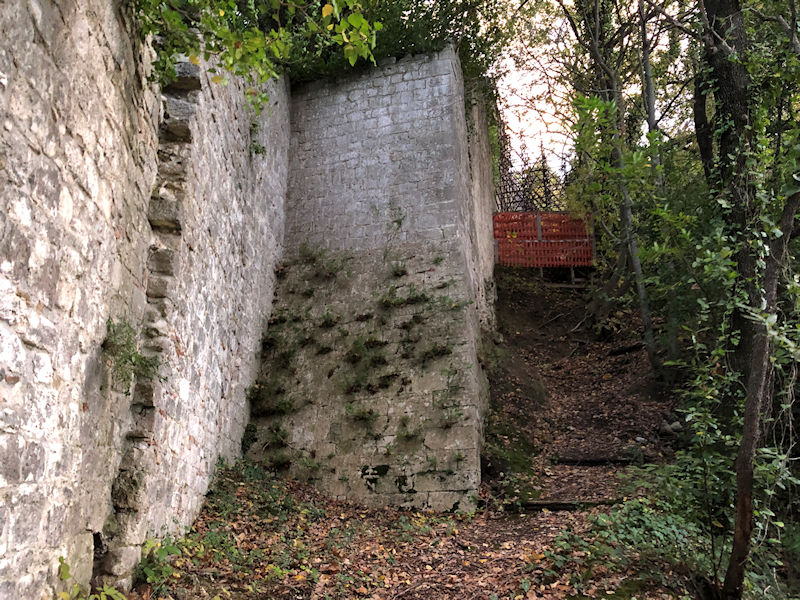
Uh oh.
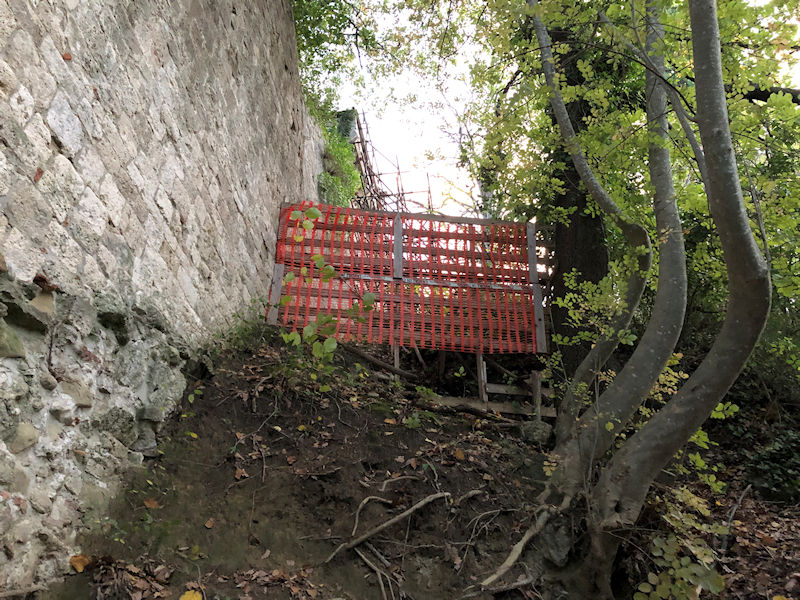
They're not kidding -- one can see some major gateworks rehabilitation going on up there.
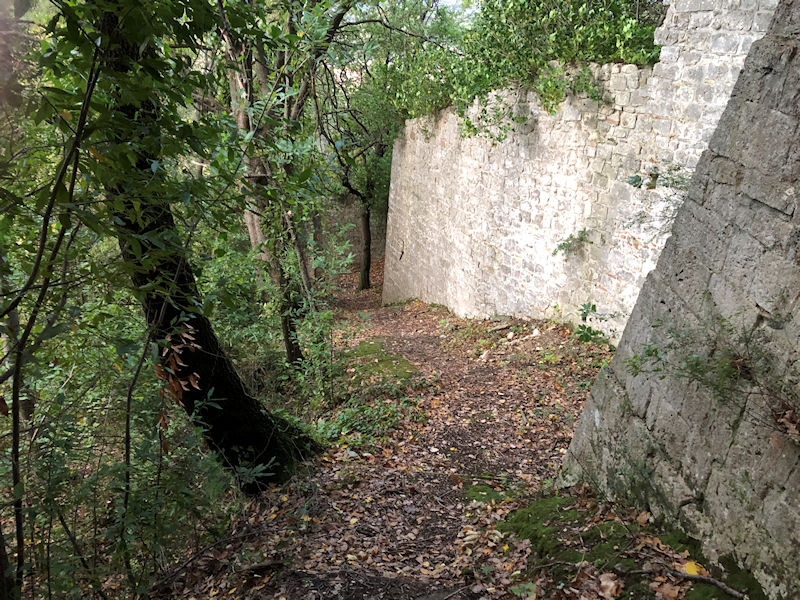
At least we don't have the stressful options of what to do next.

And also at least, we don't have a medieval Ascolani garrison dropping big things on our head.
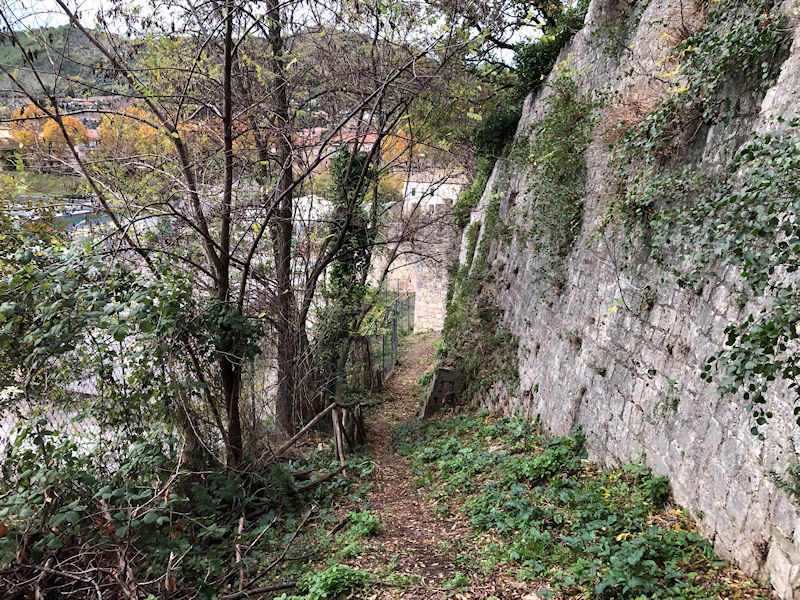
Terra firma, almost
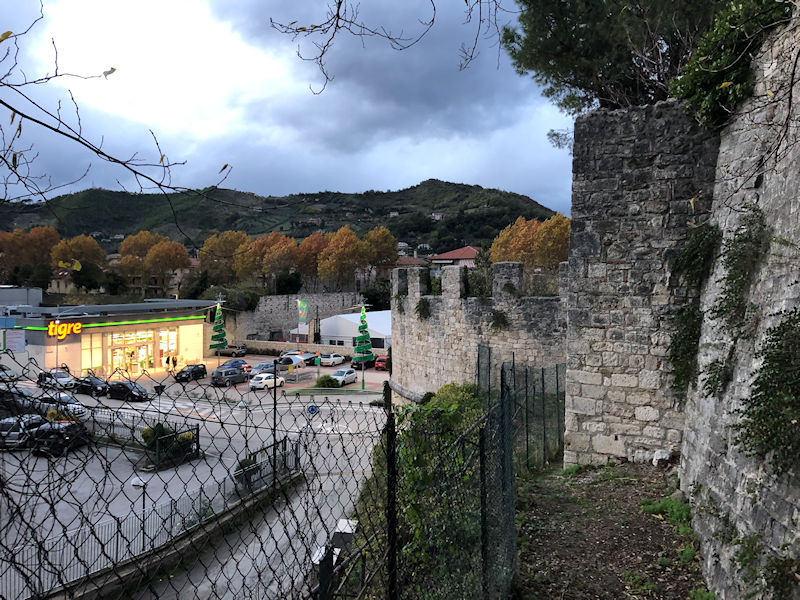
Since we're alongside the Tigre market, we could stock up a little for the evening. Or we could wait a little bit and stock up at the Coal instead, a block from our hotel.

We're hustling along the Via Dino Angelini, parallel to the Corso Mazzini, and this is the Chiesa di Santa Croce ai Templari, said to have been built by the Order of the Knights Templar in the 9th century, with a hospital attached by the Camaldolese monks which operated until 1165. The church was remodeled in the 17th century, but the hospital and convent were torn down in the 18th century.
The remains of the original Roman theatre lie in the meadow just to the right of the white flatbed truck on the road up out of town, but we didn't know that at the time.

This is what the Roman theatre would have looked like if we'd taken the photo. In the daytime. The photo is by Roberto Piperno, who writes that: 'According to tradition in 91 BC Roman magistrates were killed at the theatre during a performance; it was the signal of a general rebellion against Rome'. |
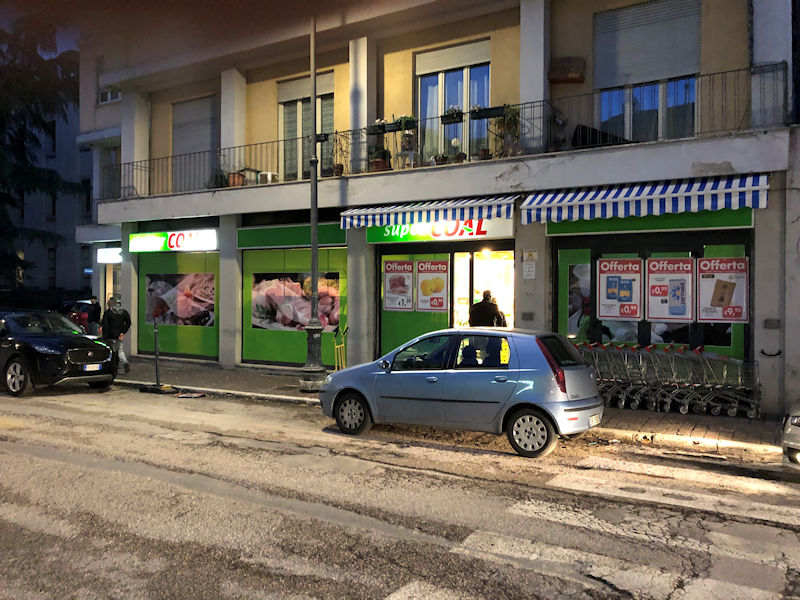
Farther along the Via Dino Angelini, here's, not just a Coal, but a Super Coal, which has contributed so significantly to our well-being throughout this visit.
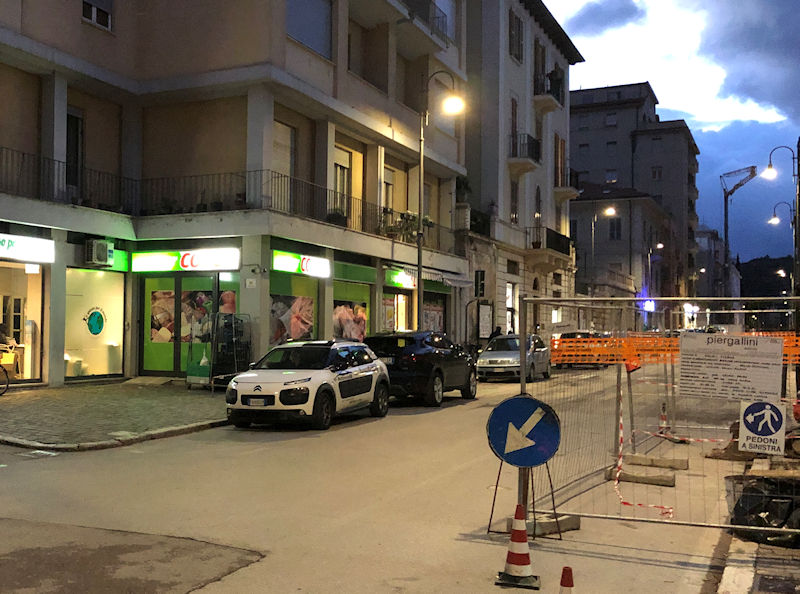
We almost think of the proprietor as a kind of friend, very understanding, even when one time we'd forgotten our wallet.

Through the picturesque little alleys to . . .

. . . the back door of the Hotel Guiderocchi and its . . .

. . . welcoming lobby. It's nearly time for dinner.

The pleasant walk back from another good dinner at the Ristorante Piccolo Teatro
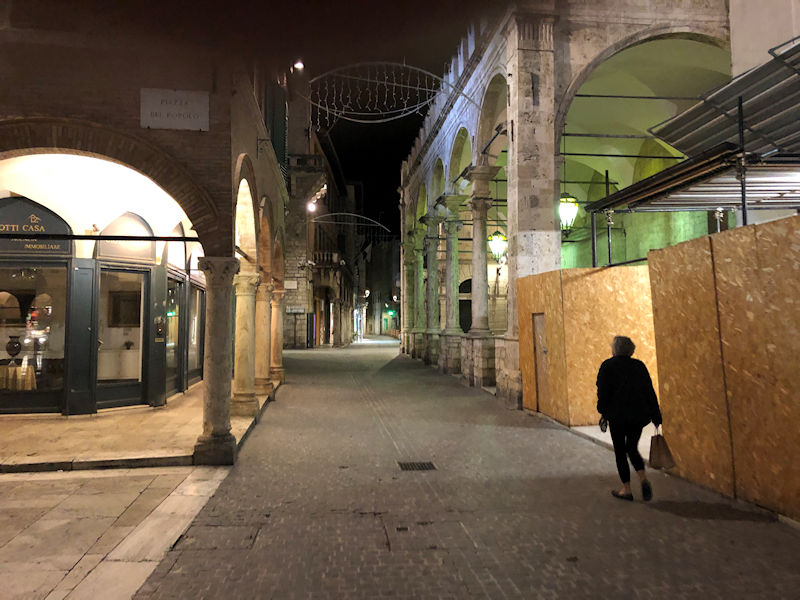
The 16th century Loggia dei Mercantini on the Corso Mazzini
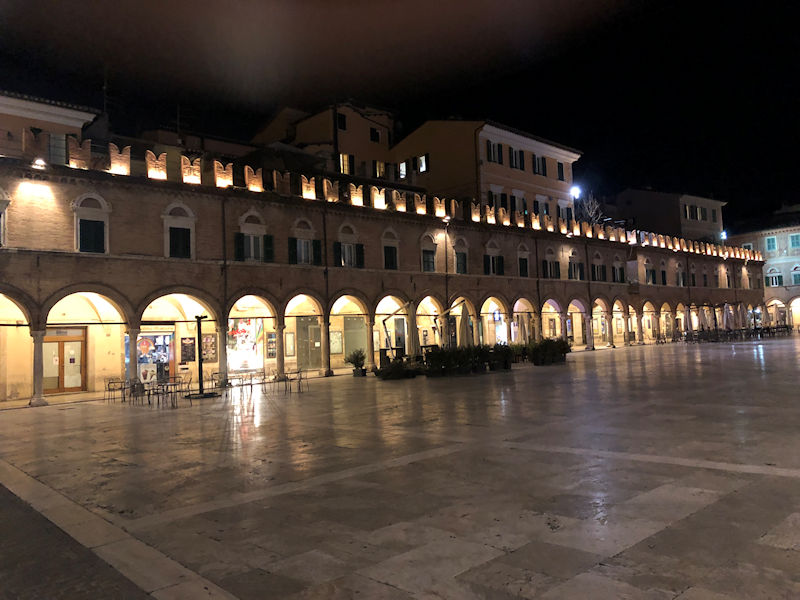
And the amazing effect of the Piazza del Popolo at night
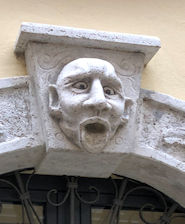 Dwight Peck's personal website
Dwight Peck's personal website






















































































